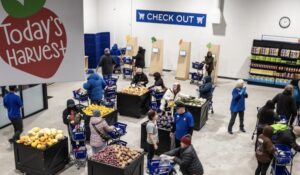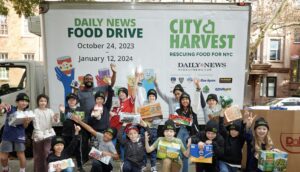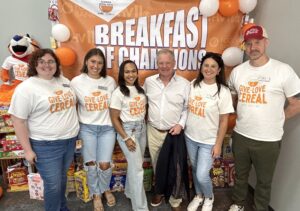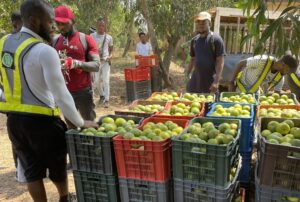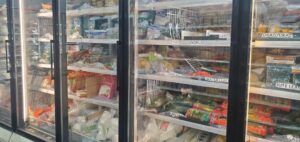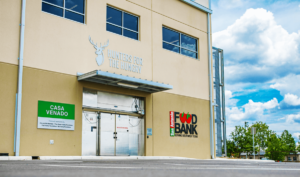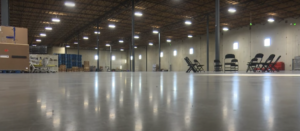Volunteer drivers are proving to be a key ingredient in the success of Feeding America’s MealConnect platform, which is expanding to include another 15 food banks by summer’s end, bringing the total number of food-bank users to 22.
Through MealConnect, volunteers are logging in to identify the locations of excess prepared food from businesses like restaurants, caterers and cafeterias, and then delivering the food to soup kitchens and/or agencies for distribution to hungry people. Equipped with temperature gauges, thermal bags and coolers, the volunteers are fully trained in handling the food safely and with sensitivity.
Feeding America did not always envision volunteers being such a big part of the process. Originally, agencies were to pick up the excess food themselves, but many didn’t have the manpower or resources to regularly respond to those opportunities. “We were challenged to think of a better solution,” said Justin Block, Managing Director of Retail Information Services at Feeding America.

By creating volunteer capacity and testing it in a “Middle Mile Delivery” pilot with seven food banks this past spring, Feeding America took into account the many day-to-day pressures on thinly stretched agencies. While many agencies continue to do their own pick-ups, getting volunteers involved allows for a fuller solution that’s more rooted in reality. “Now, we’re hitting onto something impactful,” Block said.
MealConnect has made a big difference for Second Harvest Heartland of Minn., which first ventured into rescuing prepared food in 2018 when St. Paul hosted the SuperBowl. Since that first trial by fire, Second Harvest has become an early adopter of MealConnect and participated in the “middle mile” pilot. “I don’t think we would do prepared-food recovery without it,” Dianne Wortz, Food Rescue Emerging Streams Developer, said of MealConnect. “It would be too complicated.”
Second Harvest usually receives between four and 10 food offers a day through the MealConnect prepared-food platform, which is partly funded by a $1 million grant from General Mills. Currently, it has about 18 volunteer drivers and is looking to bulk up to about 30, Wortz said.
As the program grows, Second Harvest is looking for ways to build greater sustainability into it. One issue is being able to recruit a steady stream of volunteers to make up for the ones who inevitably drop out. The food bank is working with its volunteer team to figure out how often to put out calls for volunteers, how to keep them engaged and how to thank them. “These are really busy people,” Wortz noted. “We don’t want to waste their time, but we still want to make sure they understand how important their work is.”
Another issue concerns the method of matching food donors with the agencies most capable of receiving the food. Currently, Wortz usually performs this task manually, even though there is an algorithm in the MealConnect system that aims to do it. “I feel I have a better algo in my head,” Wortz said, while also noting the difficulty of maintaining that approach as the number of donors and agencies grows.
Matching donors with agencies best able to take certain amounts of food at particular times and with limited notice may be one of the most difficult aspects of prepared-food rescue. At one point, Feeding America thought that a partnership with DoorDash, the food delivery service, would do the trick of getting rescued food delivered to the right place. A pilot, however, uncovered many operational challenges. “There were so many moving parts,” Block said. “It became unwieldy to conduct at scale.”
Melissa Spiesman, Vice President, National Site Director at Norwalk, Conn.-based Food Rescue US, which has saved more than 46 million pounds of fresh and prepared food since 2011, notes that matching algorithms are only as good as the information put into them. Food Rescue US instead relies on “location leaders” in each of the 23 areas in which it operates. These location leaders, usually volunteers or employees at other non-profits, perform the specific job of connecting food donors with receiving agencies. Having that human element helps build community and is in keeping with FoodRescue US’s core values, Spiesman noted.
Rescuing prepared food builds upon the original focus of MealConnect, available since 2014, of rescuing excess food from grocery stores. Both versions of MealConnect aim to tackle the epic amounts of food wasted every year in the United States. Since 2014, MealConnect has helped save more than 1.5 billion pounds of food overall, said Block, though he said he does not know how much of that 1.5 billion consists of bulk food rescued from grocery stores versus prepared food from meal-service businesses.
ABOVE: MealConnect volunteers at Second Harvest Heartland deliver food in customized cooler bags.

